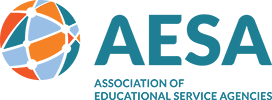September 19, 2025
Written by Noelle Ellerson Ng, Associate Executive Director, Advocacy & Governance
Earlier this summer, Congress announced a bipartisan, bicameral working group exploring myriad possibilities related to reforming the Universal Service Fund (USF) program. As a reminder, USF is a program created in the 1996 Telecommunications Act, providing connectivity to four historically underserved communities. The four USF programs are:
- High Cost Support Mechanism: Provides support to certain qualifying telephone companies that serve high cost areas, thereby making phone service affordable for the residents of these regions.
- Low Income Support Mechanism: (Sometimes called Lifeline) Assists low-income customers by helping to pay for monthly telephone charges as well as connection charges to initiate telephone service.
- Rural Health Care Support Mechanism: Allows rural health care providers to pay rates for telecommunications services similar to those of their urban counterparts, making telehealth services affordable.
- Schools and Libraries Support Mechanism: (E-Rate) Provides telecommunication services (e.g., local and long-distance calling, high-speed lines), Internet access, and internal connections (the equipment to deliver these services) to eligible schools and libraries.
The US Bipartisan Bicameral working group was announced in June, and final comments were due on September 15. AESA was proud to file in coordination with EdLiNC, the Education and Libraries Network Consortium, the premier advocacy coalition representing all beneficiaries of the E-Rate program. AASA co-chairs the EdLiNC coalition.
